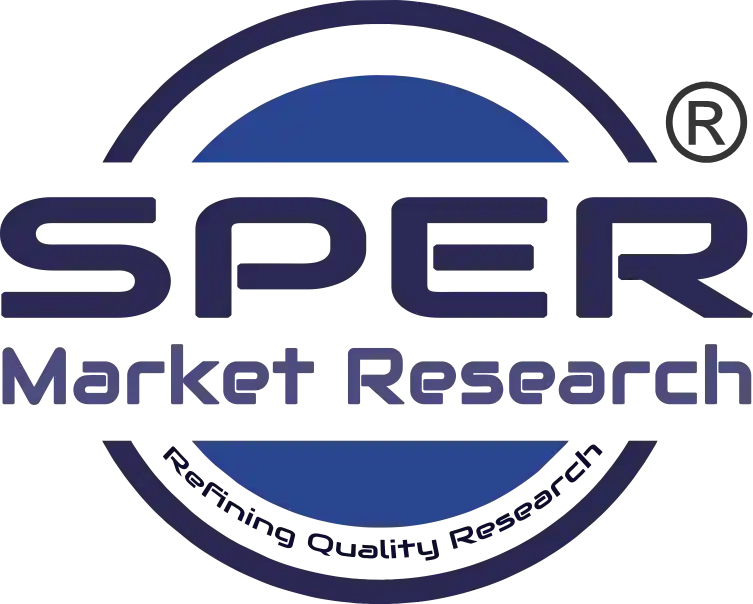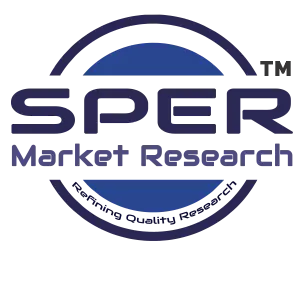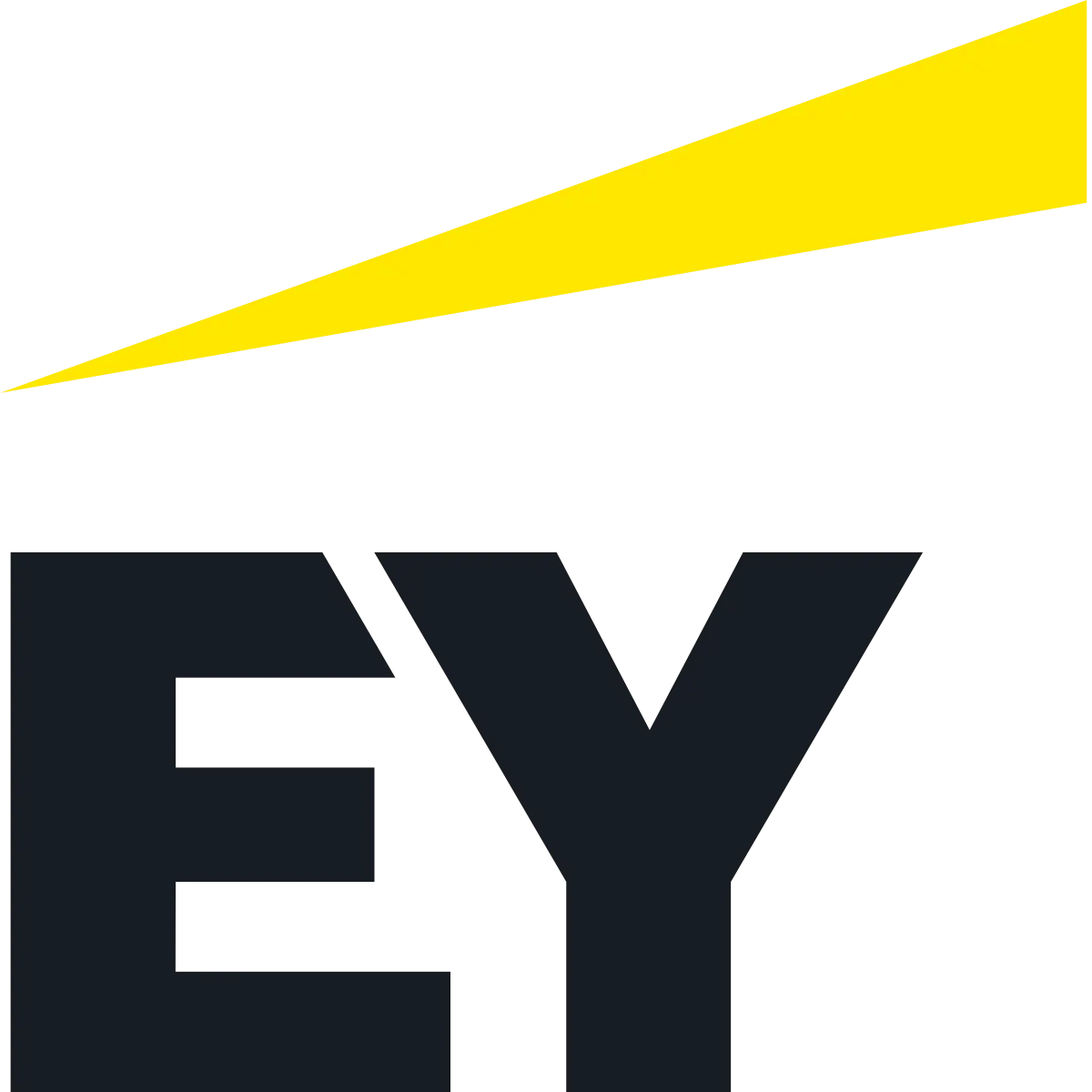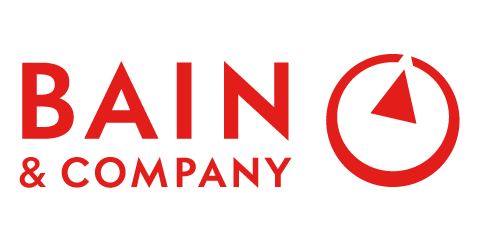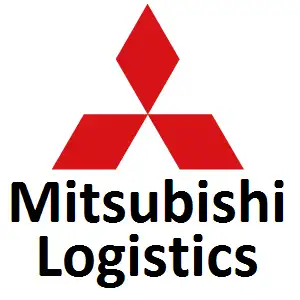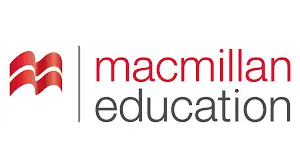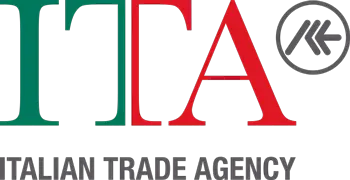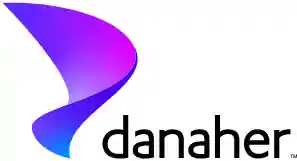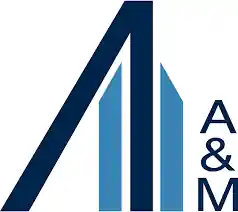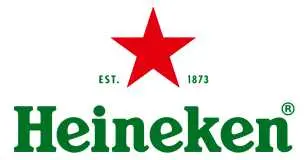
Emission Control Catalyst Market Size, Demand and Outlook 2034
Emission Control Catalyst Market Size- By Product, By Application, By Catalytic Converter - Regional Outlook, Competitive Strategies and Segment Forecast to 2034
| Published: Jun-2025 | Report ID: MACH2506 | Pages: 1 - 225 | Formats*: |
| Category : Equipment and Machinery | |||
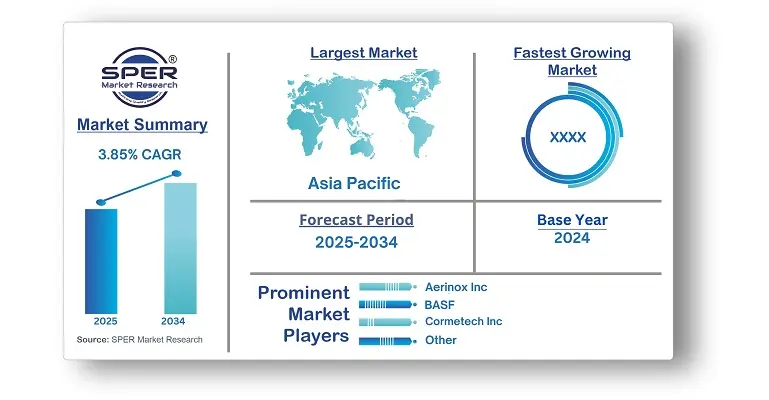
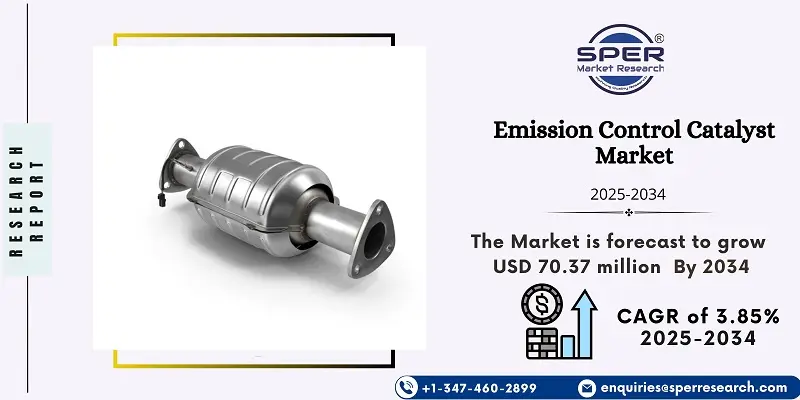
- In December 2024, Clariant successfully launched its EnviCat N2O-S catalyst at Sichuan Lutianhua’s nitric acid facility, with the system expected to cut greenhouse gas emissions by approximately 275 kilotons of CO₂ equivalent per year.
- In November 2024, Honeywell UOP formed a strategic alliance with Johnson Matthey to advance the production of renewable fuels using various feedstocks. This collaboration aims to streamline technology integration, lower operational costs, and accelerate project execution.
- In August 2024, DCL International Inc. transitioned its long-term sponsorship of the Mining Vehicle Powertrain Conference to Roadwarrior Inc., signaling a renewed focus on developing innovative clean energy technologies and advancing its environmental sustainability initiatives.
| Report Metric | Details |
| Market size available for years | 2021-2034 |
| Base year considered | 2024 |
| Forecast period | 2025-2034 |
| Segments covered | By Product, By Application, By Catalyst |
| Regions covered | North America, Latin America, Asia-Pacific, Europe, and Middle East & Africa |
| Companies Covered | Aerinox Inc, BASF, CLARIANT, Cormetech Inc, Corning Incorporated, DCL International Inc, Johnson Matthey, Shell Global, Solvay, Umicore SA. |
- Global Emission Control Catalyst Market Size (FY’2021-FY’2034)
- Overview of Global Emission Control Catalyst Market
- Segmentation of Global Emission Control Catalyst Market By Product (Palladium, Platinum, Rhodium, Others)
- Segmentation of Global Emission Control Catalyst Market By Application (Automotive, Industrial, Others)
- Segmentation of Global Emission Control Catalyst Market By Catalyst Converter (Diesel Oxidation Catalyst, Selective Catalytic Reduction, Lean NOx Trap, Three-way Catalytic Converter, Four-way Catalytic Converter)
- Statistical Snap of Global Emission Control Catalyst Market
- Expansion Analysis of Global Emission Control Catalyst Market
- Problems and Obstacles in Global Emission Control Catalyst Market
- Competitive Landscape in the Global Emission Control Catalyst Market
- Details on Current Investment in Global Emission Control Catalyst Market
- Competitive Analysis of Global Emission Control Catalyst Market
- Prominent Players in the Global Emission Control Catalyst Market
- SWOT Analysis of Global Emission Control Catalyst Market
- Global Emission Control Catalyst Market Future Outlook and Projections (FY’2025-FY’2034)
- Recommendations from Analyst
- 1.1. Scope of the report
- 1.2. Market segment analysis
- 2.1. Research data source
- 2.1.1. Secondary Data
- 2.1.2. Primary Data
- 2.1.3. SPERs internal database
- 2.1.4. Premium insight from KOLs
- 2.2. Market size estimation
- 2.2.1. Top-down and Bottom-up approach
- 2.3. Data triangulation
- 4.1. Driver, Restraint, Opportunity and Challenges analysis
- 4.1.1. Drivers
- 4.1.2. Restraints
- 4.1.3. Opportunities
- 4.1.4. Challenges
- 5.1. SWOT Analysis
- 5.1.1. Strengths
- 5.1.2. Weaknesses
- 5.1.3. Opportunities
- 5.1.4. Threats
- 5.2. PESTEL Analysis
- 5.2.1. Political Landscape
- 5.2.2. Economic Landscape
- 5.2.3. Social Landscape
- 5.2.4. Technological Landscape
- 5.2.5 .Environmental Landscape
- 5.2.6. Legal Landscape
- 5.3. PORTERs Five Forces
- 5.3.1. Bargaining power of suppliers
- 5.3.2. Bargaining power of buyers
- 5.3.3. Threat of Substitute
- 5.3.4. Threat of new entrant
- 5.3.5. Competitive rivalry
- 5.4. Heat Map Analysis
- 6.1. Global Emission Control Catalyst Market Manufacturing Base Distribution, Sales Area, Product Type
- 6.2. Mergers & Acquisitions, Partnerships, Product Launch, and Collaboration in Global Emission Control Catalyst Market
- 7.1. Palladium
- 7.2. Platinum
- 7.3. Rhodium
- 7.4. Others
- 8.1. Automotive
- 8.2. Industrial
- 8.3. Others
- 9.1. Diesel Oxidation Catalyst
- 9.2. Selective Catalytic Reduction
- 9.3. Lean NOx Trap
- 9.4. Three-way Catalytic Converter
- 9.5. Four-way Catalytic Converter
- 10.1. Global Emission Control Catalyst Market Size and Market Share
- 11.1. Asia-Pacific
- 11.1.1. Australia
- 11.1.2. China
- 11.1.3 .India
- 11.1.4. Japan
- 11.1.5. South Korea
- 11.1.6. Rest of Asia-Pacific
- 11.2. Europe
- 11.2.1. France
- 11.2.2. Germany
- 11.2.3. Italy
- 11.2.4. Spain
- 11.2.5. United Kingdom
- 11.2.6. Rest of Europe
- 11.3. Middle East and Africa
- 11.3.1. Kingdom of Saudi Arabia
- 11.3.2. United Arab Emirates
- 11.3.3. Qatar
- 11.3.4. South Africa
- 11.3.5. Egypt
- 11.3.6. Morocco
- 11.3.7. Nigeria
- 11.3.8. Rest of Middle-East and Africa
- 11.4. North America
- 11.4.1. Canada
- 11.4.2. Mexico
- 11.4.3. United States
- 11.5. Latin America
- 11.5.1. Argentina
- 11.5.2. Brazil
- 11.5.3. Rest of Latin America
- 12.1. Aerinox Inc
- 12.1.1. Company details
- 12.1.2. Financial outlook
- 12.1.3. Product summary
- 12.1.4. Recent developments
- 12.2. BASF
- 12.2.1. Company details
- 12.2.2. Financial outlook
- 12.2.3. Product summary
- 12.2.4. Recent developments
- 12.3. CLARIANT
- 12.3.1. Company details
- 12.3.2. Financial outlook
- 12.3.3. Product summary
- 12.3.4. Recent developments
- 12.4. Cormetech Inc
- 12.4.1. Company details
- 12.4.2. Financial outlook
- 12.4.3. Product summary
- 12.4.4. Recent developments
- 12.5.Corning Incorporated
- 12.5.1. Company details
- 12.5.2. Financial outlook
- 12.5.3. Product summary
- 12.5.4. Recent developments
- 12.6. DCL International Inc
- 12.6.1. Company details
- 12.6.2. Financial outlook
- 12.6.3. Product summary
- 12.6.4. Recent developments
- 12.7. Johnson Matthey
- 12.7.1. Company details
- 12.7.2. Financial outlook
- 12.7.3. Product summary
- 12.7.4. Recent developments
- 12.8. Shell Global
- 12.8.1. Company details
- 12.8.2. Financial outlook
- 12.8.3. Product summary
- 12.8.4. Recent developments
- 12.9. Solvay
- 12.9.1. Company details
- 12.9.2. Financial outlook
- 12.9.3. Product summary
- 12.9.4. Recent developments
- 12.10 .Umicore SA
- 12.10.1. Company details
- 12.10.2. Financial outlook
- 12.10.3. Product summary
- 12.10.4. Recent developments
- 12.11. Others
SPER Market Research’s methodology uses great emphasis on primary research to ensure that the market intelligence insights are up to date, reliable and accurate. Primary interviews are done with players involved in each phase of a supply chain to analyze the market forecasting. The secondary research method is used to help you fully understand how the future markets and the spending patterns look likes.
The report is based on in-depth qualitative and quantitative analysis of the Product Market. The quantitative analysis involves the application of various projection and sampling techniques. The qualitative analysis involves primary interviews, surveys, and vendor briefings. The data gathered as a result of these processes are validated through experts opinion. Our research methodology entails an ideal mixture of primary and secondary initiatives.
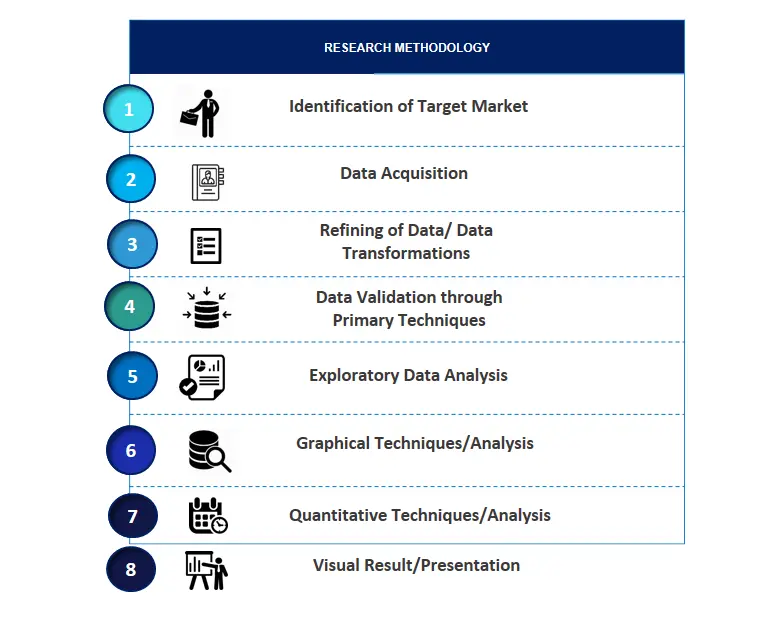
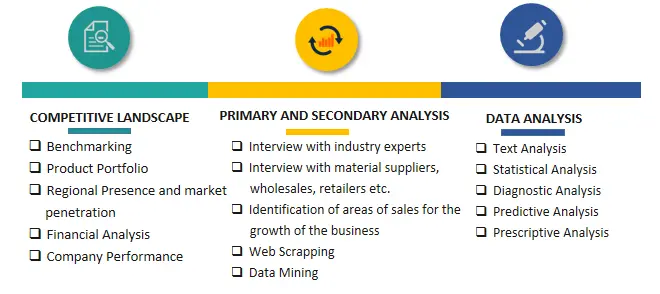

Frequently Asked Questions About This Report
PLACE AN ORDER
Year End Discount
Sample Report
Pre-Purchase Inquiry
NEED CUSTOMIZATION?
Request CustomizationCALL OR EMAIL US
100% Secure Payment
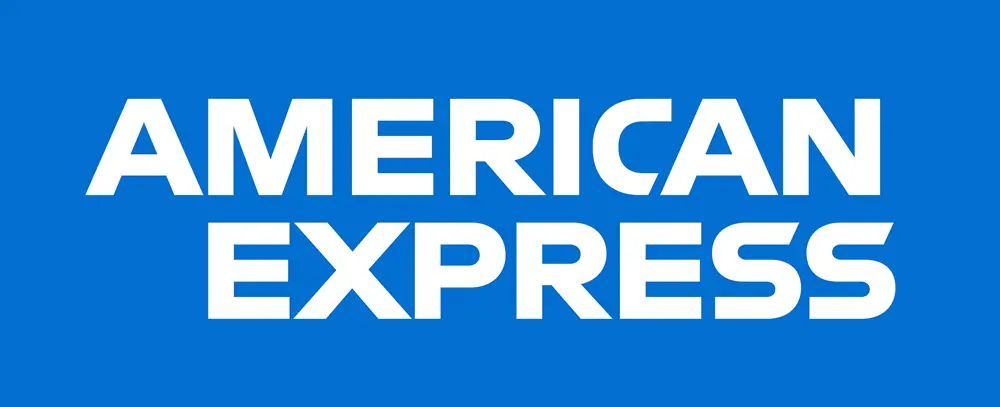
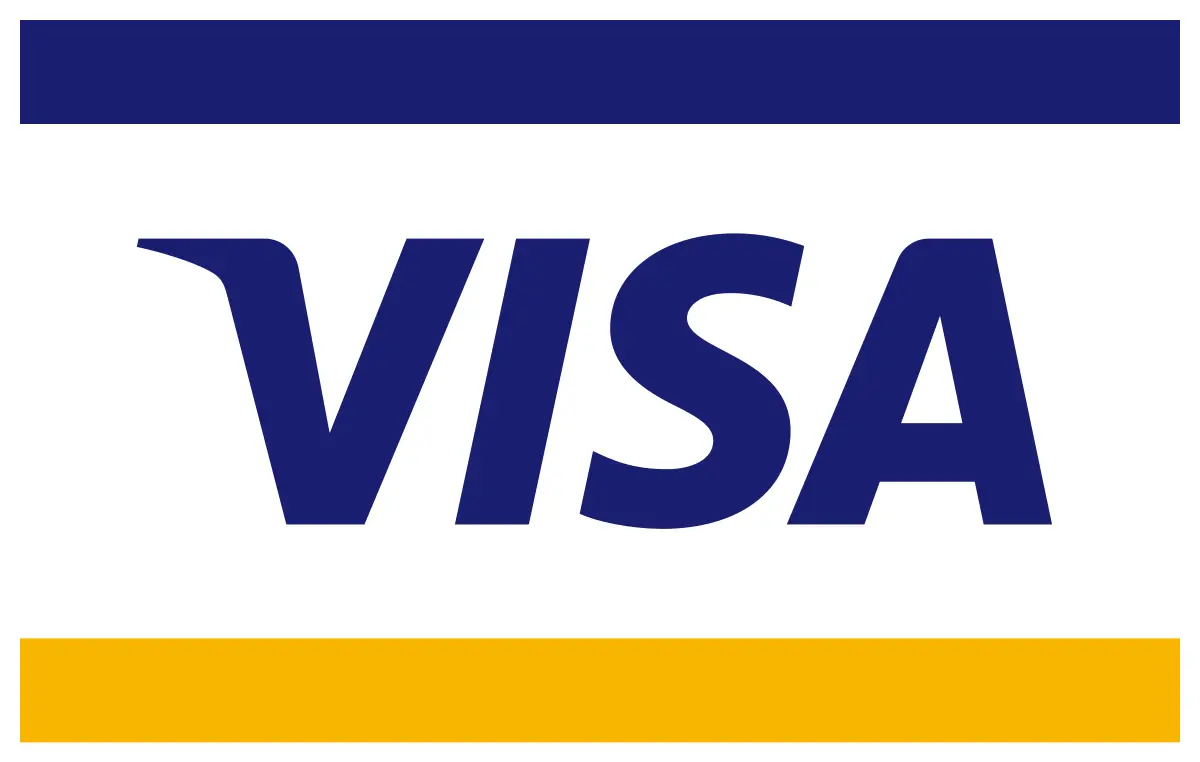
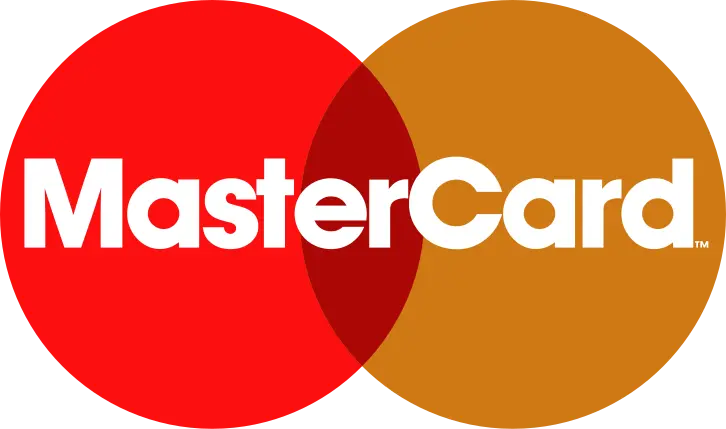


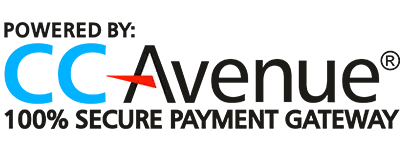
Related Reports
Our Global Clients
Our data-driven insights have influenced the strategy of 200+ reputed companies across the globe.
